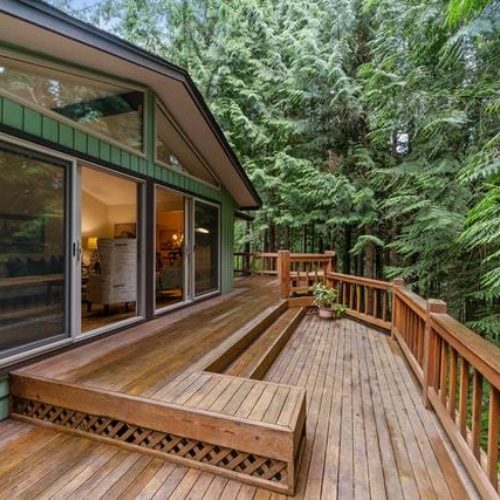What You Need to Know About Pressure-Treated Wood
At AIFP, our lumber traders leverage relationships with mills and suppliers to deliver the best products at the best prices. In today’s blog, we’re answering your questions about pressure-treated wood.
What is Pressure-Treated Wood?
Pressure treated (PT) lumber is wood that has been placed in a depressurized holding tank that removes excess air and replaces it with a solution of water and preservative agents that help protect the wood from rot and insects. Some woods, like southern yellow pine, are better suited for pressure treatment, while others, like cedar, have natural properties that resist rot and decay, which means they don’t need to be treated to be used outdoors.
When to Use Pressure-Treated Wood?
Pressure-treated wood should be used for all outdoor projects, assuming you’re using a type of wood that is not naturally repellant to insects and rot. That said, not all pressure treatments are created equal. The two main types of PT lumber are above-ground and ground-contact.
Above-Ground Lumber
You’ll want to use above-ground pressure-treated wood in outdoor applications that are at least 6 inches above ground, including deck railings, fence pickets, porch flooring, and joists and beams.
Ground-Contact Lumber
Ground-contact wood has a higher chemical concentration that better protects it from contact with soil, vegetation, rain, moisture, or other agents that can cause decay and rot. It should be used whenever wood will come in contact with the ground or is installed less than six inches above the ground, when the wood will get wet frequently and without proper time to dry, when air circulation is bad, and/or if you are building in a tropical climate. Common uses for ground-contact wood include structural posts, garden boxes, wood foundations, and landscape walls.
How Long Does Pressure-Treated Wood Last?
It depends on the climate, the type of wood, its uses, and how well it’s maintained. While pressure treated poles can stay up to 40 years without any signs of rot or decay, decks and flooring might only last around 10 years. To make your pressure treated wood last longer, you’ll want to apply water-repellant sealers annually and use a mildewcide cleaner at the first signs of any mildew growing on your wood.
Is Pressure-Treated Wood Safe?
Yes, pressure-treated wood is safe for use in everything from raised garden beds to children’s playhouses. Before 2003, pressure-treated lumber was often treated with chromated copper arsenate (CCA), a preservative containing some amount of poisonous arsenic. Because small amounts of arsenic can leach out of treated wood, the EPA and the wood industry decided to move away from CCA treated wood to other types of wood preservatives, including Alkaline Copper Quaternary (ACQ) and Propiconazole.
Safety Tips for Using Pressure-Treated Wood
- Use a dust mask and eye protection whenever cutting or drilling into pressure-treated wood
- Collect and carefully dispose of sawdust from pressure-treated wood
- Do not burn pressure-treated wood
- Do not use pressure-treated wood for cutting boards or any food prep surface
- Do not use pressure-treated wood for indoor applications
Can You Paint Pressure-Treated Wood?
Yes, you can paint pressure-treated lumber, however, you will need to wait until the wood is completely dried before painting. This can take weeks or months, and you’ll want to make sure the wood absorbs all water on the surface before painting. Additionally, you’ll want to use a latex primer and water-based paint.
Can You Stain Pressure Treated Wood?
Yes, you can stain pressure-treated lumber. Like with painting, you’ll need to wait until the wood is completely dry, which can take weeks or months. Once the wood is cleaned and dried it can be stained.
If you’re in the market for pressure-treated lumber for a manufacturing or construction project, American International Forest Products has you covered. Contact us today to learn more about how we can help you meet your unique needs. In the meantime, check out our wood blog, where we cover other lumber products we trade, including spruce, pine, fir and plywood.

Jump Start Your Career
Up for the challenge? We'll give you the tools to excel. AIFP is continually growing. We recruit new traders year-round.
